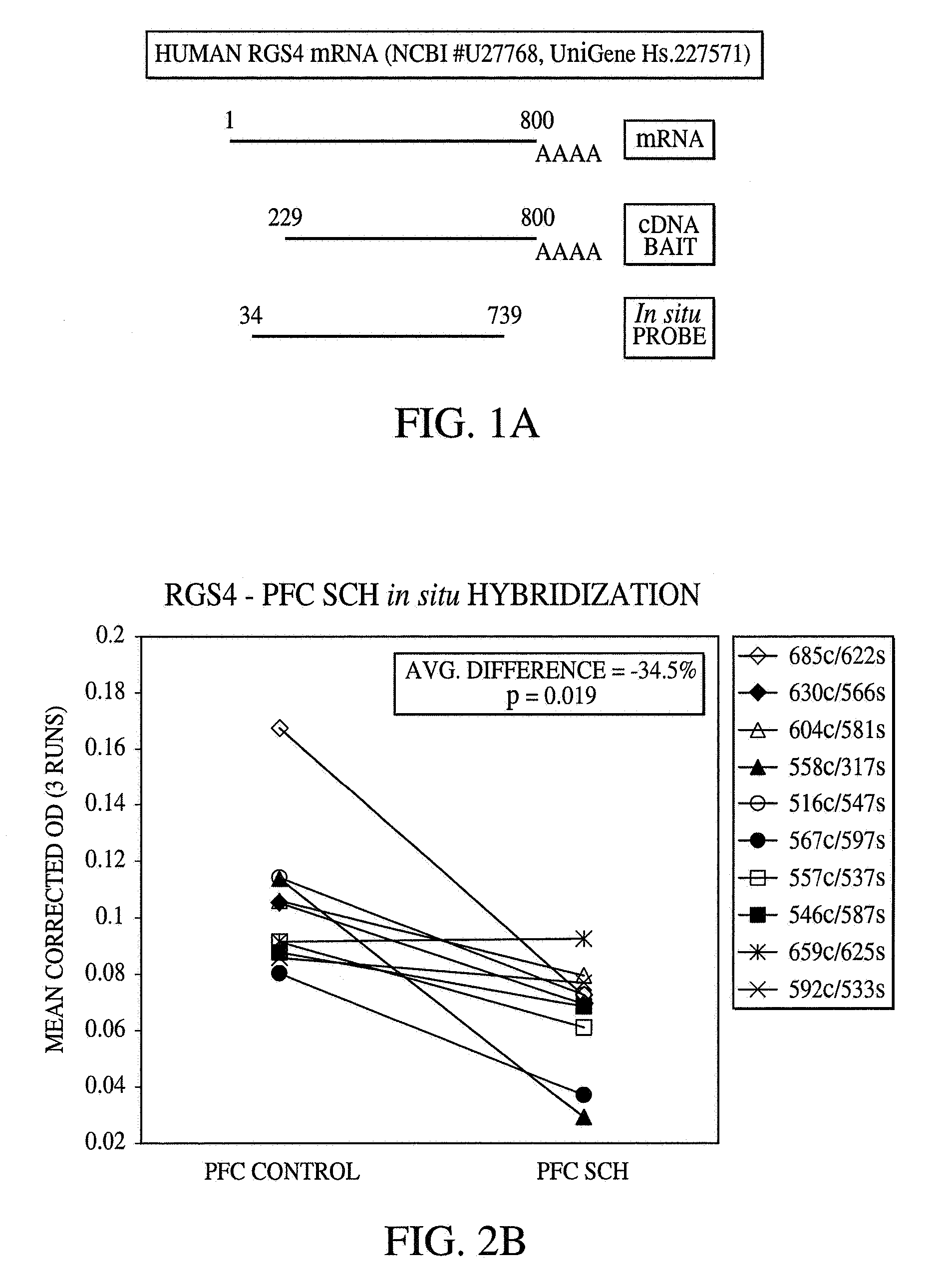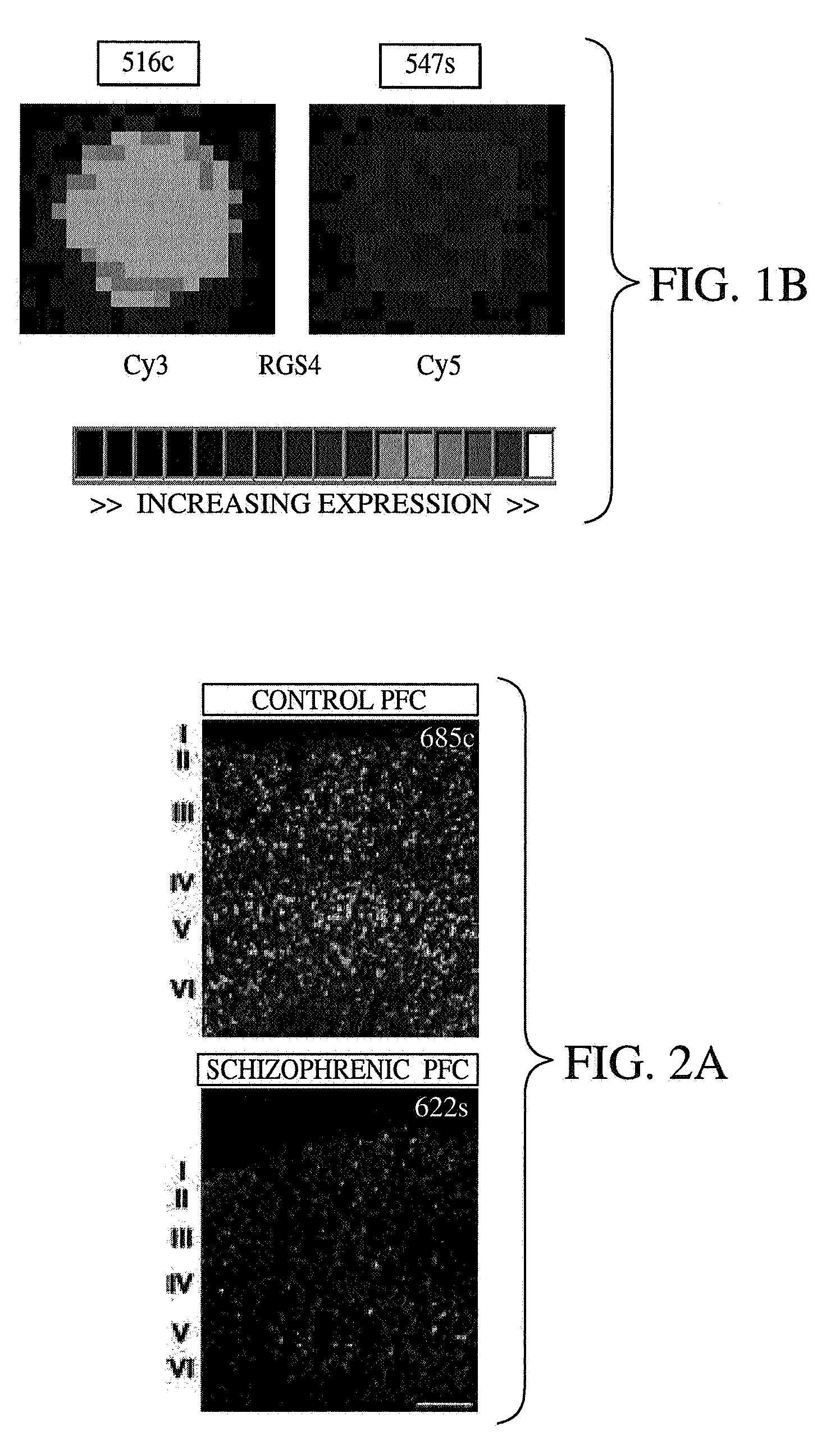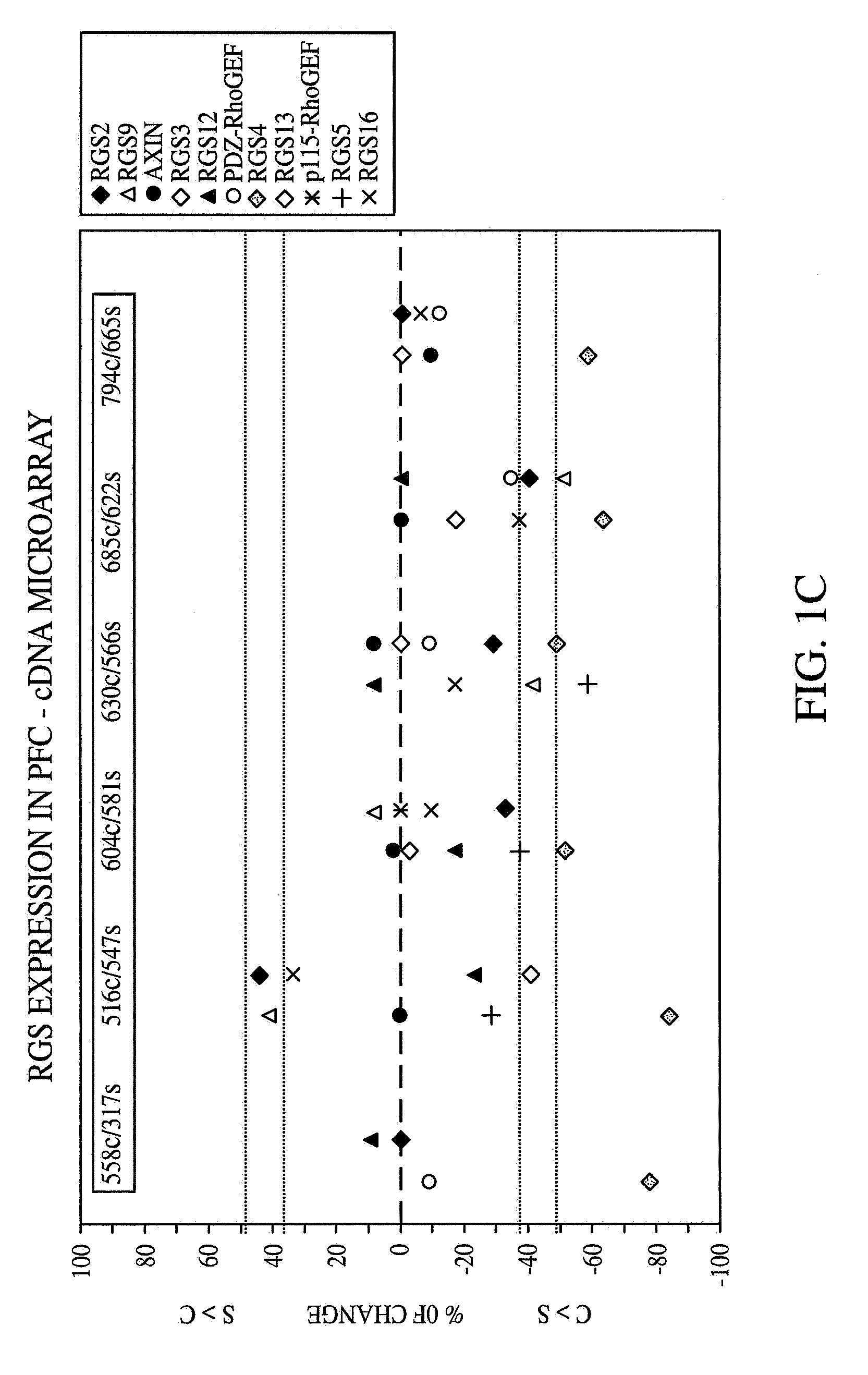Methods and systems for facilitating the diagnosis and treatment of schizophrenia
a technology for schizophrenia and diagnosis, applied in the field of neurological and physiological dysfunctions associated with schizophrenia, can solve the problems of difficult ascertainment and nearly impossible to quantify, time-consuming and laborious process of reviewing the categories and applying them to patient data, and achieve the effect of improving psychiatric function
- Summary
- Abstract
- Description
- Claims
- Application Information
AI Technical Summary
Benefits of technology
Problems solved by technology
Method used
Image
Examples
Embodiment Construction
[0047] The present invention focuses on the genetic underpinnings of schizophrenia. In the first phase of the research, cDNA microarrays were used to investigate potential alterations in transcript expression in six pairs of schizophrenic subjects. RGS4 was determined to be the most significantly and consistently changed transcript. In situ hybridization was also used to verify the microarray findings and to examine the regional and disease-related specificity of this change. Out of the several hundred genes on locus 1q21-22, the present studies indicate that RGS4 is a strong candidate for a major susceptibility gene on this locus. Genetic association and linkage studies were conducted using two samples independently in Pittsburgh and by the NIMH Collaborative Genetics Initiative. Using the Transmission Disequilibrium Test (TDT), significant transmission distortion was observed in both samples, albeit with different haplotypes. In support of the TDT results, increased sharing of all...
PUM
| Property | Measurement | Unit |
|---|---|---|
| temperature | aaaaa | aaaaa |
| temperature | aaaaa | aaaaa |
| temperature | aaaaa | aaaaa |
Abstract
Description
Claims
Application Information
 Login to View More
Login to View More - R&D
- Intellectual Property
- Life Sciences
- Materials
- Tech Scout
- Unparalleled Data Quality
- Higher Quality Content
- 60% Fewer Hallucinations
Browse by: Latest US Patents, China's latest patents, Technical Efficacy Thesaurus, Application Domain, Technology Topic, Popular Technical Reports.
© 2025 PatSnap. All rights reserved.Legal|Privacy policy|Modern Slavery Act Transparency Statement|Sitemap|About US| Contact US: help@patsnap.com



